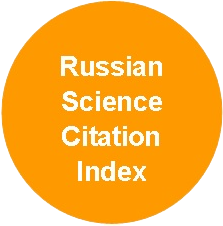Biological and Morphological Characteristics of Species of the Genus Crataegus L. in the Arboretum of Khakass
DOI:
https://doi.org/10.37482/0536-1036-2025-4-50-63Keywords:
Khakassia, steppe zone, arboretum, hawthorn species, methods of reproduction, rhythm of growth, rhythm of development, flowering periodAbstract
In the flora of Khakassia, there is one species of hawthorn – Crataegus sanguinea Pall., its fruits are used as medicinal raw materials. It does not form large thickets, while the raw material is in high demand. Therefore, the introduction of new species of hawthorn is relevant. The aim of the research has been to establish the rhythm of development of the arboretum hawthorns in modern conditions, as well as to identify promising species for use in landscaping in the steppe zone of Khakassia. The hawthorn collection in the arboretum of the Research Institute of Agricultural Problems of Khakassia includes 21 species. Of these, 42.8 % are of North American origin, 19.1 % of species are from the Far East and Central Asia, 9.4 % are from Europe, and 4.8 % are from East Asia. The average age of the plants has been 40.6± ±1.3 years. This age is considerable for the conditions of the dry steppe. Based on statistical processing of phenological data over the past 10 years, the rhythm of growth and development of the hawthorn collection has been determined. The periods of vegetation, flowering, fruiting and leaf fall have been established. The sums of effective temperatures required in the spring-summer period of plant development have been determined. A calendar of hawthorn flowering has been compiled. Most species of North American and all of Central Asian origin bloom at the same time. 42.8 % of hawthorns have been identified, which, in terms of the timing of the stages of vegetation, fully fit into the period for local plants, 57.2 % have a long vegetation period. The peak flowering of the arboretum’s hawthorns falls on May 19–28, with an average flowering period of 9 days. As a result, all the species under consideration are quite promising for cultivation in the conditions of the steppe zone of Khakassia. 28.5 % of species are vegetatively mobile, while the rest are characterized by seed reproduction. Species such as Crataegus songarica C. Koch. and C. arnoldiana Sarg., with fruits of good taste quality, are proposed for use in fruit gardening. Species with spreading crowns can be distributed as solitaires in landscaping settlements in the steppe zone of Khakassia. Drought-resistant hawthorns are suitable for creating tall hedges.
Downloads
References
Александрова Ю.В. Боярышники – перспективные интродуценты для озеленения северных городов // Наука – лесному хоз-ву Севера: сб. науч. тр. ФБУ «СевНИИЛХ». Архангельск: СевНИИЛХ, 2019. С. 194–198. Aleksandrova Yu.V. Hawthorns – Promising Introduced Species for Landscaping Northern Cities. Nauka – lesnomu khozyajstvu Severa: Collection of Scientific Papers of the Federal Budgetary Institution “Northern Research Institute of Forestry”. Arkhangelsk, Northern Research Institute of Forestry Publ., 2019, pp. 194–198. (In Russ.).
Введение в культуру интродуцированных перспективных видов растений для южных районов Средней Сибири: метод. реком. / РАСХН, Сиб. отд-ние, ГНУ НИИАП Хакасии. Абакан: Март, 2003. 23 с. Introduction into the Culture of Introduced Promising Plant Species for the Southern Regions of Central Siberia: Guidelines. Abakan, Russian Academy of Agricultural Sciences (Siberian Branch), State Science Institution “Research Institute of Agricultural Problems of Khakassia”, 2003. 23 p. (In Russ.).
Винокуров А.А. Боярышники Алтайского ботанического сада // Современные экологические проблемы Центрально-Черноземного региона: материалы. заочн. Междунар. науч.-практ. конф. Вып. 2. Особо охраняемые природные территории. Интродукция растений. Воронеж: Роза ветров, 2016. С. 33–46. Vinokurov A.A. Hawthorns of the Altai Botanical Garden. Modern Environmental Problems of the Central Black Earth Region: Materials of the Correspondence International Scientific and Practical Conference. Iss. 2. Specially Protected Natural Territories. Introduction of Plants. Voronezh, Roza vetrov Publ., 2016, pp. 33–46. (In Russ.).
Донская О.Л., Николаева З.Н. Экологическая оценка агроэкосистем юга Средней Сибири. Абакан: Хакасск. гос. ун-т им. Н.Ф. Катанова, 2008. 176 с. Donskaya O.L., Nikolaeva Z.N. Ecological Assessment of Agroecosystems of the South of Central Siberia. Abakan, Khakassian State University named after N. F. Katanov Publ., 2008. 176 p. (In Russ.).
Зайцев Г.Н. Фенология древесных растений. М.: Наука, 1981. 120 с. Zajtsev G.N. Phenology of Woody Plants. Moscow, Nauka Publ., 1981. 120 p. (In Russ.).
Кентбаева Б.А. Методика визуальной оценки перспективности древесных растений на примере представителей рода Crataegus L. // Плодоводство, семеноводство, интродукция древесных растений. 2010. No 13. С. 64–68. Kentbaeva B.A. Methodology for Visual Assessment of the Potential of Woody Plants by the Example of Representatives of the genus Crataegus L. Plodovodstvo, semenovodstvo, introduktsiya drevesnykh rastenij, 2010, no. 13, pp. 64–68. (In Russ.).
Лиховид Н.И. Интродукция деревьев и кустарников в Хакасии. Новосибирск, 1994. Ч. 1. 348 с. Likhovid N.I. Introduction of Trees and Shrubs in Khakassia. Novosibirsk, 1994, part 1. 348 p. (In Russ.).
Лиховид Н.И. Интродукция древесных растений в аридных условиях юга Средней Сибири. Абакан: Март, 2007. С. 8–13. Likhovid N.I. Introduction of Woody Plants in Arid Conditions of the South of Central Siberia. Abakan, Mart Publ., 2007, pp. 8–13. (In Russ.).
Лучник З.И. Методика изучения интродуцированных деревьев и кустарников // Вопросы декоративного садоводства. Барнаул, 1964. С. 6–22. Luchnik Z.I. Methodology for Studying Introduced Trees and Shrubs. Voprosy dekorativnogo sadovodstva. Barnaul, 1964, pp. 6–22. (In Russ.).
Мамаев С.А. Закономерности внутривидовой изменчивости лиственных древесных пород. Свердловск, 1975. 140 с. Mamaev S.A. Patterns of Intraspecific Variability of Deciduous Tree Species. Sverdlovsk, 1975. 140 p. (In Russ.).
Петрик В.В., Александрова Ю.В., Васильева Н.Н. Фенологическое развитие некоторых видов боярышников в дендрологическом саду САФУ // Ландшафтная архитектура в ботанических садах и дендропарках: сб. мат. VIII Междунар. конф. Южно-Сахалинск: Транспорт. С. 120–124. Petrik V.V., Aleksandrova Yu.V., Vasil’eva N.N. Phenological Development of Some Species of Hawthorns in the Dendrological Garden of the Northern (Arctic) Fedaral University. Landscape Architecture in Botanical Gardens and Arboretums: Proceedings of the VIII International Conference. Yuzhno-Sakhalinsk, Transport Publ., pp. 120–124. (In Russ.).
Сорокин О.Д. Прикладная статистика на компьютере. Краснообск: ГУП РПО СО РАСХН, 2004. 162 с. Sorokin O.D. Applied Statistics on a Computer. Krasnoobsk, Russian Academy of Agricultural Sciences, 2004. 162 p. (In Russ.).
Уфимов Р.А. Род Боярышник (Crataegus L., Rosaceae) во флоре Восточной Европы и Кавказа: автореф. дис. ... канд. биол. наук. Санкт-Петербург, 2013. 22 с. Ufimov R.A. The Genus Hawthorn (Crataegus L., Rosaceae) in the Flora of Eastern Europe and the Caucasus: Cand. Biol. Sci. Diss. Abs. St. Petersburg, 2013. 22 p. (In Russ.).
Федорова Д.Г. Формирование коллекции представителей рода Crataegus L. в ботаническом саду Оренбургского государственного университета // Colloquium-Journal. 2017. No 10. С. 5–8. Fedorova D.G. Formation of a Collection of Representatives of the Genus Crataegus L. in the Botanical Garden of the Orenburg State University. Colloquium-Journal, 2017, no. 10, pp. 5–8. (In Russ.).
Фирсова М.В. Интегральная оценка перспективности использования в культуре некоторых видов рода Crataegus L. в условиях лестепного Приобья // Вестн. ИрГСХА. 2011. Т. 8, вып. 44. С. 138–144. Firsova M.V. Integral Assessment of the Prospects of Use of Some Crataegus L. Species in the Forest-Steppe Circumob Area. Vestnik IrGSHA, 2011, vol. 8, iss. 44, pp. 138– 144. (In Russ.).
Школа ландшафтного дизайна. Режим доступа: www.landscape-school.ru (дата обращения: 20.10.22). The School of Landscape Design. (In Russ.).
Dai H., Zhang Z., Guo X. Adventitious Bud Regeneration from Leaf and Cotyledon Explants of Chinese Hawthorn (Crataegus pinnatifida Bge. var. major N.E.Br.). In Vitro Cellular Developmental Biology – Plant, 2007, vol. 43, pp. 2–8. https://doi.org/10.1007/s11627-006-9008-3
Dong W., Li Z.X. The Science and Practice of Chinese Fruit Tree: Hawthorn. Shanxi, Science Press, 2015, pp. 23–52.
Emami A., Shabanian N., Rahmani M.-S., Khadivi A., Mohammad-Panah N. Genetic Characterization of the Crataegus Genus: Implications for in situ Conservation. Scientia Horticulturae, 2018, vol. 231, pp. 56–65. https://doi.org/10.1016/j.scienta.2017.12.014
Khiari S., Boussaid M., and Messaoud C. Genetic Diversity and Population Structure in Natural Populations of Tunisian Azarole (Crataegus azarolus L. var. aronia L.) Assessed by Microsatellite Markers. Biochemical Systematics and Ecology, 2015, vol. 59, pp. 264–270. https://doi.org/10.1016/j.bse.2015.01.025
Lo E.Y.Y., Stefanović S., Christensen K.I., Dickinson T.A. Evidence for Genetic Association between East Asian and Western North American Crataegus L. (Rosaceae) and Rapid Divergence of the Eastern North American Lineages Based on Multiple DNA Sequences. Molecular Phylogenetics and Evolution, 2009, vol. 51, iss. 2, pp. 157–168. https://doi.org/10.1016/j.ympev.2009.01.018
Mallet J. Hybrid Speciation. Nature, 2007, vol. 446, pp. 279–283. https://doi.org/10.1038/nature05706
Nas M.N., Gokbunar L., Sevgin N., Aydemir M., Dagli M., Susluoglu Z. Micropropagation of Mature Crataegus aronia L., a Medicinal and Ornamental Plant with Rootstock Potential for Pome Fruit. Plant Growth Regulation, 2012, vol. 67, pp. 57–63. https://doi.org/10.1007/s10725-012-9662-x
Özyurt G., Yücesan Z., Ak N., Oktan E., Üçler A.Ö. Ecological and Economic Importance of Studying Propagation Techinques of Common Hawthorn Crataegus monogyna Jacq. Sibirskij lesnoj zhurnal = Siberian Journal of Forest Science, 2019, no 4, pp. 63–67.
Phipps J.B., O’Kennon R.J., Lance R.W. Hawthorns and Medlars. Portland, 2003. 139 p.
Phipps J.В., O’Kennon R.J., Dvorsky K.A. Review of Crataegus series Pulcherrimae (Rosaceae). Sida, 2006, vol. 22, no. 2, pp. 973–1007.
Strelets V.D., Balabanov V.I., Vinogradova O.A. Prospects of Hawthorn Introduction into Industrial Fruit Culture. Nauchnyj al’manakh stran Prichernomor’ya = Science Almanac of Black Sea Region Countries, 2015, no. 2, pp. 13–18.
Du X., Zhang X., Bu H., Zhang T., Lao Y., Dong W. Molecular Analysis of Evolution and Origins of Cultivated Hawthorn (Crataegus spp.) and Related Species in China. Frontiers in Plant Science, 2019, vol. 10, art. no. 443. https://doi.org/10.3389/fpls.2019.00443













